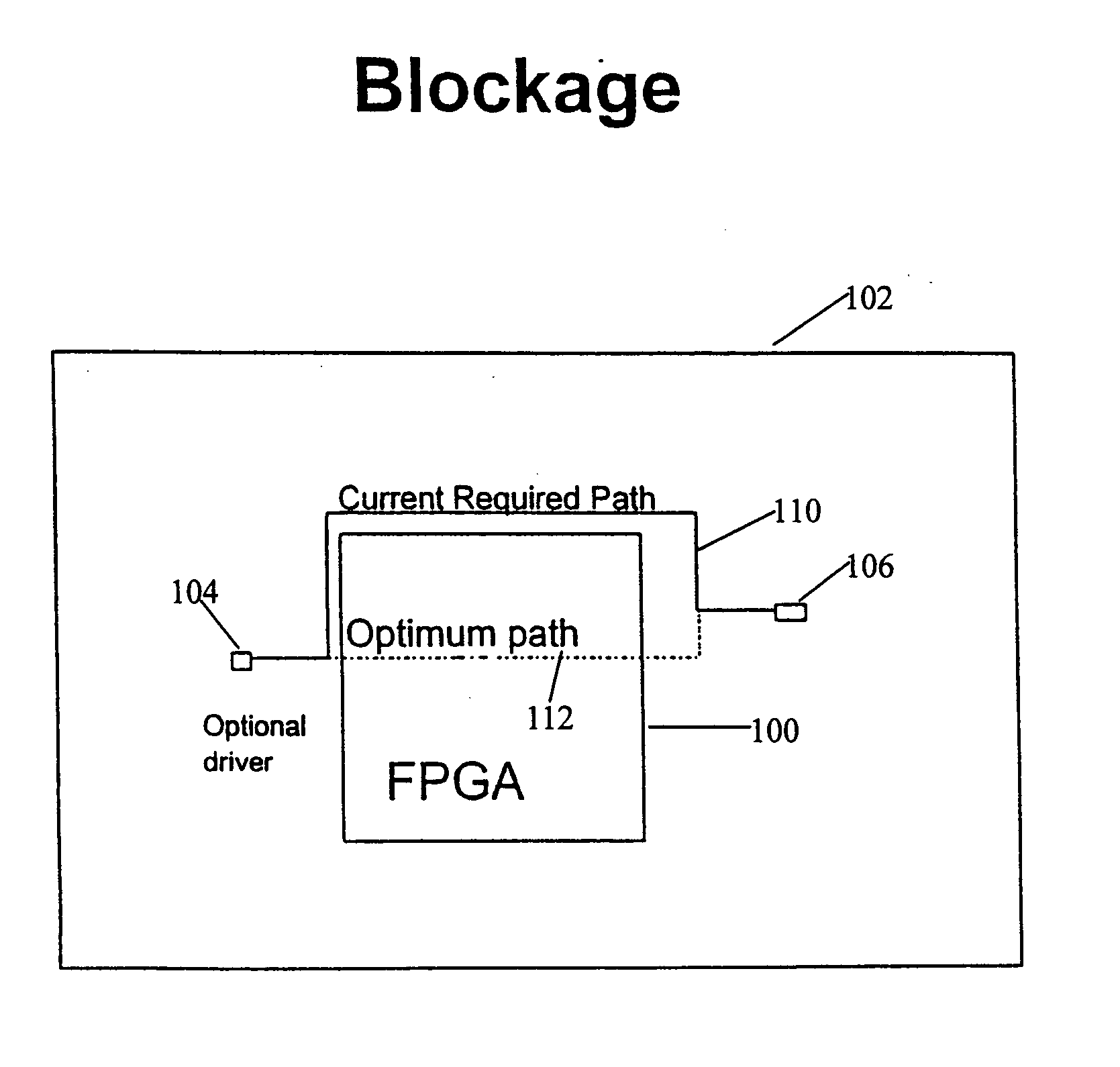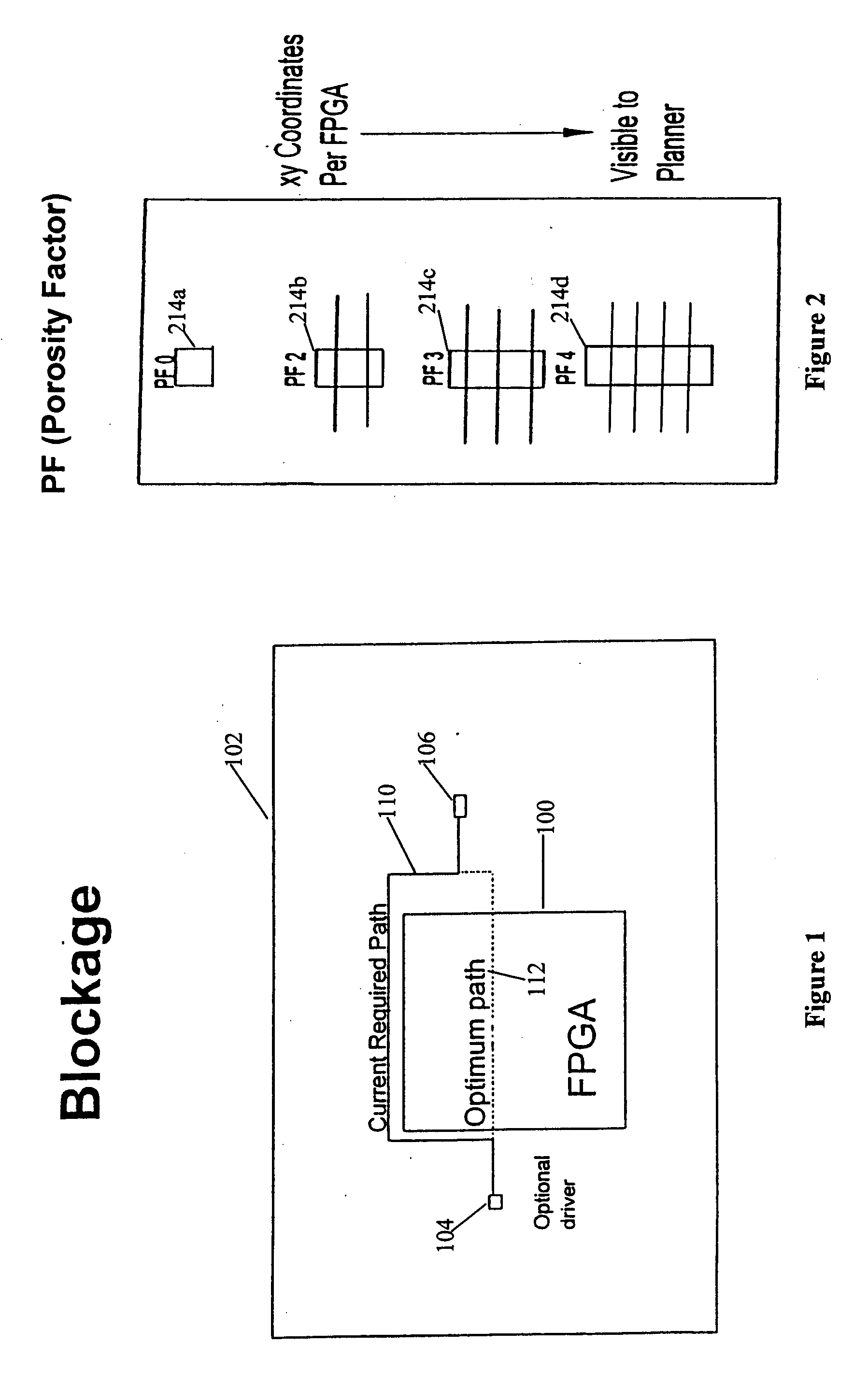FPGA blocks with adjustable porosity pass thru
a technology of porosity and gate array, applied in logic circuits using specific components, instruments, semiconductor/solid-state device details, etc., can solve the problems of inability to wire through the chip in the macro area, channel blockage, and inability to meet the requirements of micro-controllers, so as to minimize the chip floor plan and timing impact
- Summary
- Abstract
- Description
- Claims
- Application Information
AI Technical Summary
Benefits of technology
Problems solved by technology
Method used
Image
Examples
Embodiment Construction
[0022] A VLSI chip includes a large number of electrical and logical functions, such as static and dynamic random access memory, read only storage, and programmable logic arrays. The chip is partitioned into regions that might contain different functions. The chip layout is designed to interconnect the different regions while keeping the interconnects as short as possible.
[0023] When custom designing a chip, there are certain requirements for the timing relationships between signals that go into the chip and the signals that exit the chip. Since the chip is very complex, the relationship of these I / O signals translates into a number of other requirements for the timing within the chip, and that go through circuits and that intersect certain storage elements within the chip. All of the timing requirements must be met for the chip to function properly within the system. These number in the hundreds of thousands of timing relationships that must interleave smoothly and must complement...
PUM
 Login to View More
Login to View More Abstract
Description
Claims
Application Information
 Login to View More
Login to View More - R&D
- Intellectual Property
- Life Sciences
- Materials
- Tech Scout
- Unparalleled Data Quality
- Higher Quality Content
- 60% Fewer Hallucinations
Browse by: Latest US Patents, China's latest patents, Technical Efficacy Thesaurus, Application Domain, Technology Topic, Popular Technical Reports.
© 2025 PatSnap. All rights reserved.Legal|Privacy policy|Modern Slavery Act Transparency Statement|Sitemap|About US| Contact US: help@patsnap.com



